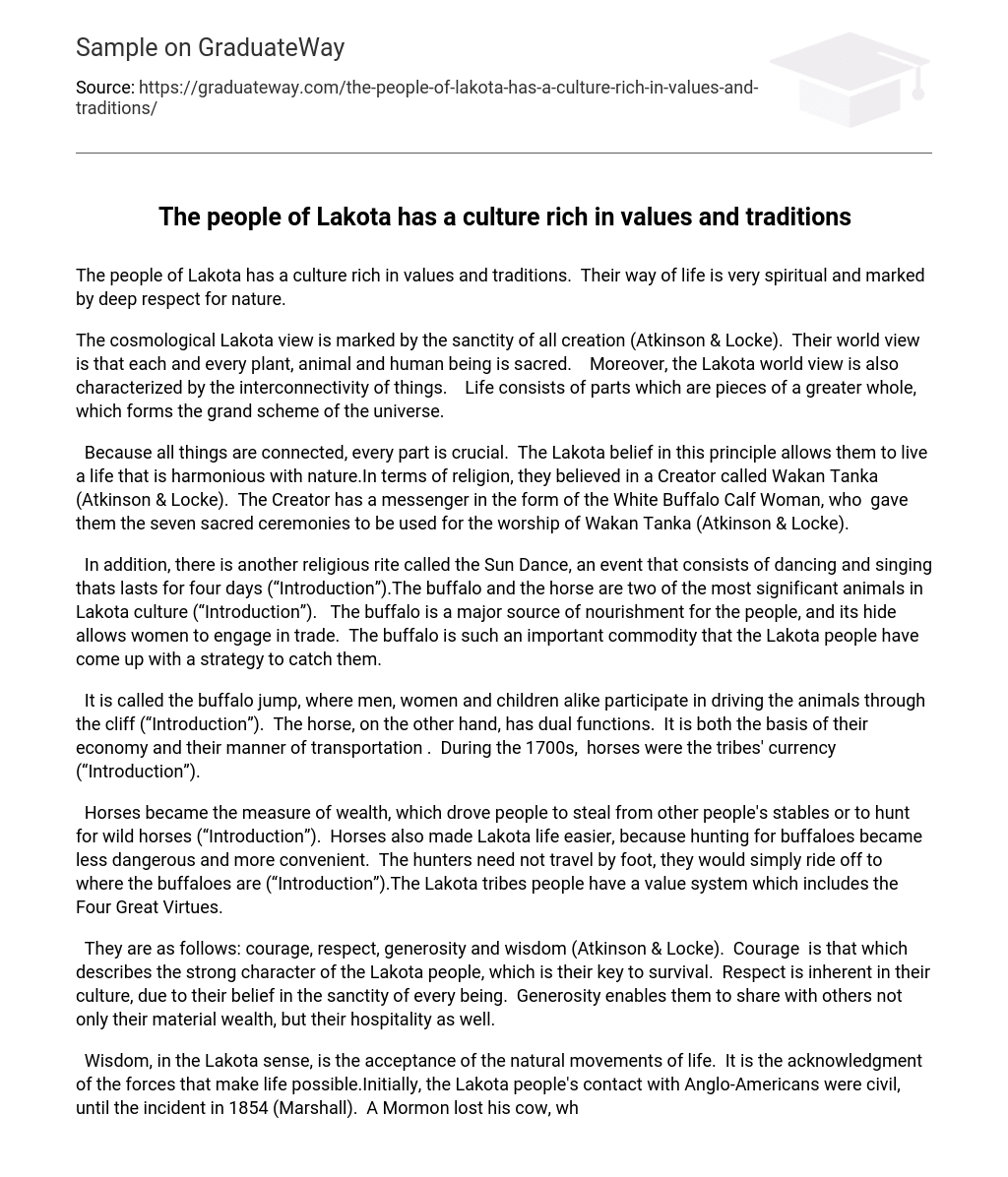The Lakota people possess a culture that is imbued with values and traditions, which are deeply rooted in spirituality and a profound reverence for nature.
According to Atkinson & Locke, the cosmological perspective of the Lakota people emphasizes the sacredness of all creation. They believe that every plant, animal, and human being is held in high regard. Additionally, the Lakota view underscores the interconnected nature of existence. The various components of life are seen as integral parts of a larger entity, shaping the universe as a whole.
According to Lakota belief, the interconnectedness of all things emphasizes the importance of every part. This belief allows them to lead a harmonious life with nature. In their religion, they worship a Creator known as Wakan Tanka, as described by Atkinson and Locke. They also believe in the White Buffalo Calf Woman, who serves as a messenger for the Creator and bestowed upon them seven sacred ceremonies for worshiping Wakan Tanka (Atkinson & Locke).
Moreover, the Lakota culture includes a religious ceremony known as the Sun Dance, which involves a four-day-long combination of dancing and singing (“Introduction”). The buffalo and the horse hold great significance in Lakota culture, with the buffalo serving as a vital source of sustenance for the community and enabling trading opportunities for women due to its hide. Recognizing its importance, the Lakota people have developed tactics to pursue and capture these valuable animals.
The activity known as the buffalo jump involves both men, women, and children working together to guide the animals towards the cliff (“Introduction”). Meanwhile, the horse serves a dual purpose for the tribe as it serves as their primary means of transportation and also forms the foundation of their economy. In fact, horses held great value during the 1700s and were used as currency by the tribes (“Introduction”).
Using horses, people were driven to steal from others or hunt for wild horses as a means of gaining wealth. This made hunting buffaloes easier and less risky for the Lakota people, as they could ride instead of walking. Additionally, the Lakota tribespeople uphold a value system that consists of the Four Great Virtues.
The Lakota people possess several essential qualities: courage, respect, generosity, and wisdom (Atkinson & Locke). Courage is integral to their survival and signifies their strong character. Respect is deeply ingrained in their culture as they hold the belief that every being is sacred. Moreover, generosity enables them to share not only material wealth but also their warm hospitality with others.
Wisdom, according to the Lakota belief, entails embracing and acknowledging the inherent rhythms of life and the forces that sustain it. In their interactions with Anglo-Americans, the Lakota people were initially on good terms until the occurrence of the 1854 incident involving a Mormon whose cow was fatally attacked by a Lakota.
Conquering Bear, a Lakota elder, exemplified generosity by giving the Mormon a horse named Marshall. He persisted in offering additional horses even after the Mormon declined. The army was dispatched to resolve the matter, but it escalated when gunfire erupted. In response, the Lakota people demonstrated courage by fighting back.
The Lakota value system brought the Lakota people into conflict with Anglo-Americans, resulting in the killing of soldiers. This information is cited from Atkinson and Locke’s work, “Children as Sacred Beings”.
On January 24, 2008, the website http://www.usm.maine.
Visit edu/~atkinson/lakota_children.htm or Dream-Catchers.org.
The website “dream-catchers” can be accessed between the dates of January 24, 2007 and January 24, 2008.
org/lakota-history.php; Marshall, John., III.
Lakota Culture and History. 15 Sept. 2001. 24 Jan.





